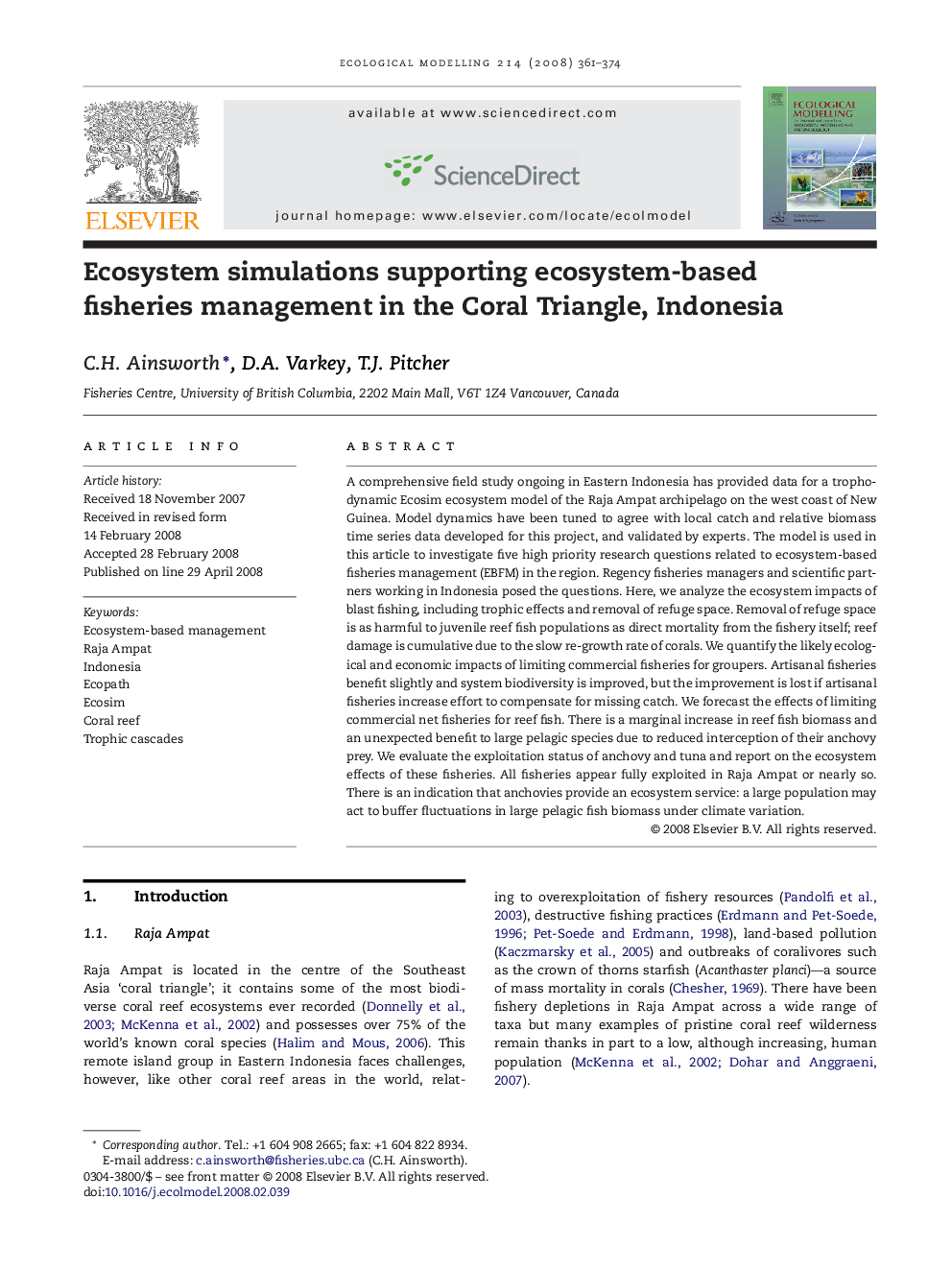| Article ID | Journal | Published Year | Pages | File Type |
|---|---|---|---|---|
| 4378178 | Ecological Modelling | 2008 | 14 Pages |
A comprehensive field study ongoing in Eastern Indonesia has provided data for a trophodynamic Ecosim ecosystem model of the Raja Ampat archipelago on the west coast of New Guinea. Model dynamics have been tuned to agree with local catch and relative biomass time series data developed for this project, and validated by experts. The model is used in this article to investigate five high priority research questions related to ecosystem-based fisheries management (EBFM) in the region. Regency fisheries managers and scientific partners working in Indonesia posed the questions. Here, we analyze the ecosystem impacts of blast fishing, including trophic effects and removal of refuge space. Removal of refuge space is as harmful to juvenile reef fish populations as direct mortality from the fishery itself; reef damage is cumulative due to the slow re-growth rate of corals. We quantify the likely ecological and economic impacts of limiting commercial fisheries for groupers. Artisanal fisheries benefit slightly and system biodiversity is improved, but the improvement is lost if artisanal fisheries increase effort to compensate for missing catch. We forecast the effects of limiting commercial net fisheries for reef fish. There is a marginal increase in reef fish biomass and an unexpected benefit to large pelagic species due to reduced interception of their anchovy prey. We evaluate the exploitation status of anchovy and tuna and report on the ecosystem effects of these fisheries. All fisheries appear fully exploited in Raja Ampat or nearly so. There is an indication that anchovies provide an ecosystem service: a large population may act to buffer fluctuations in large pelagic fish biomass under climate variation.
